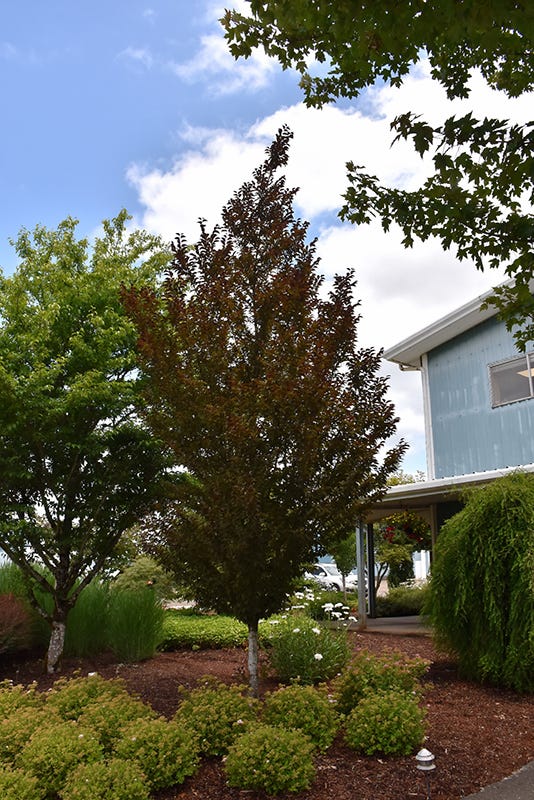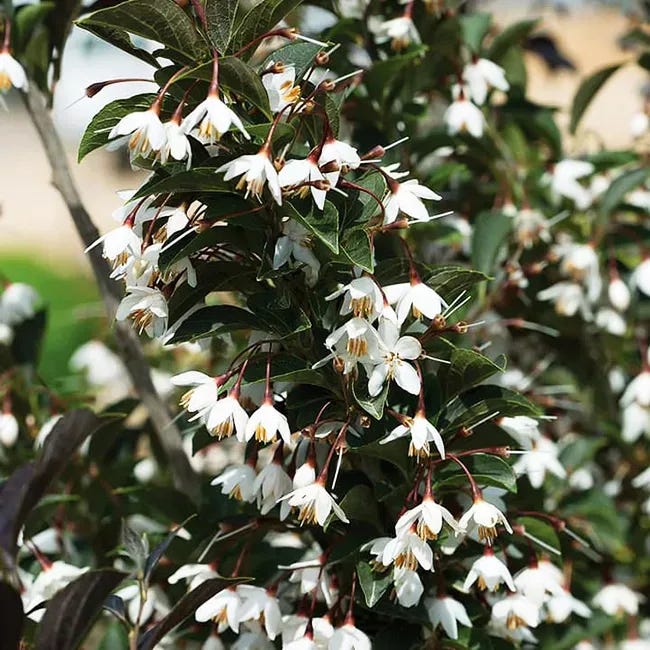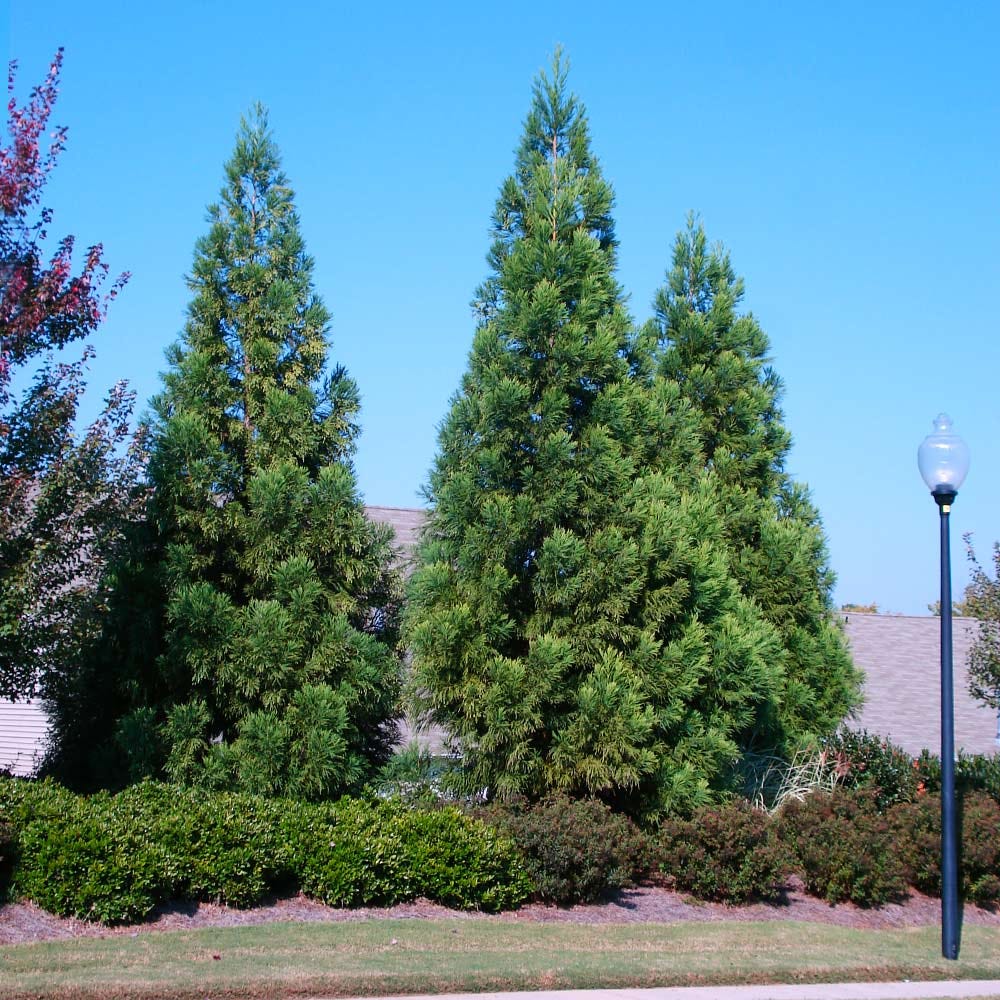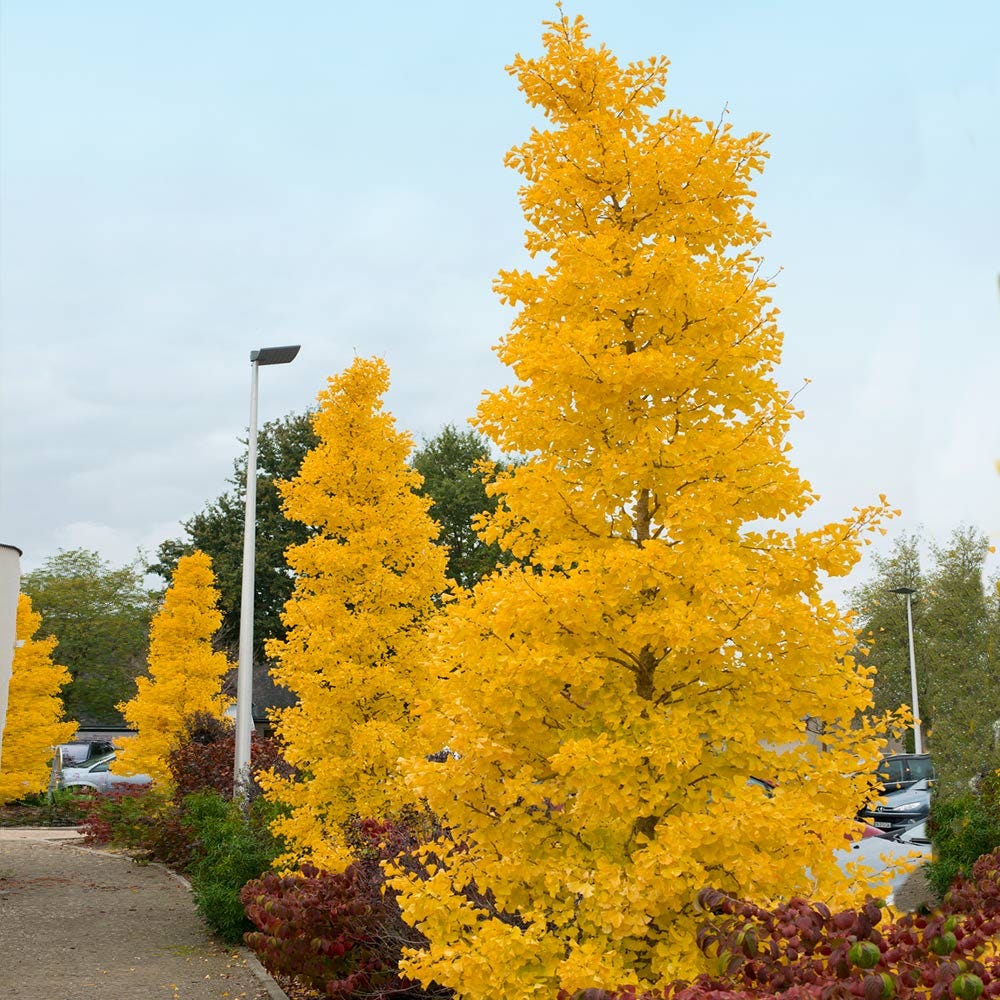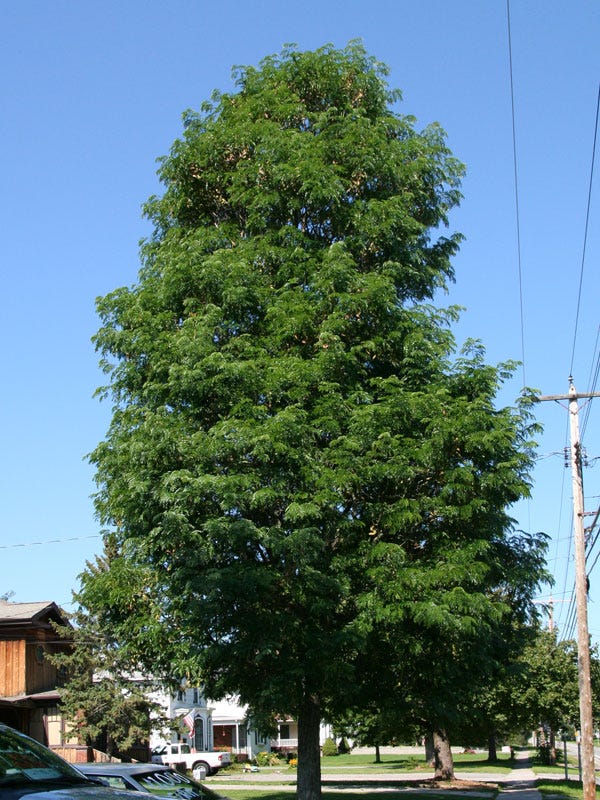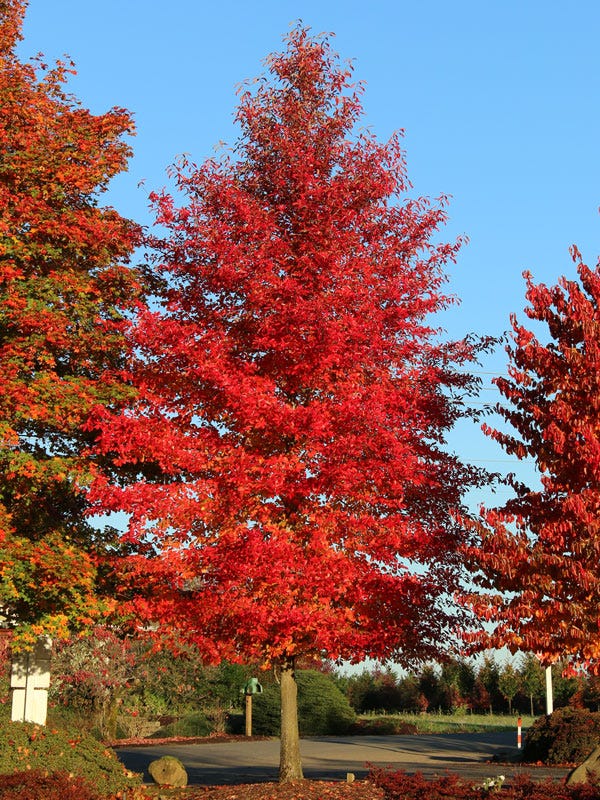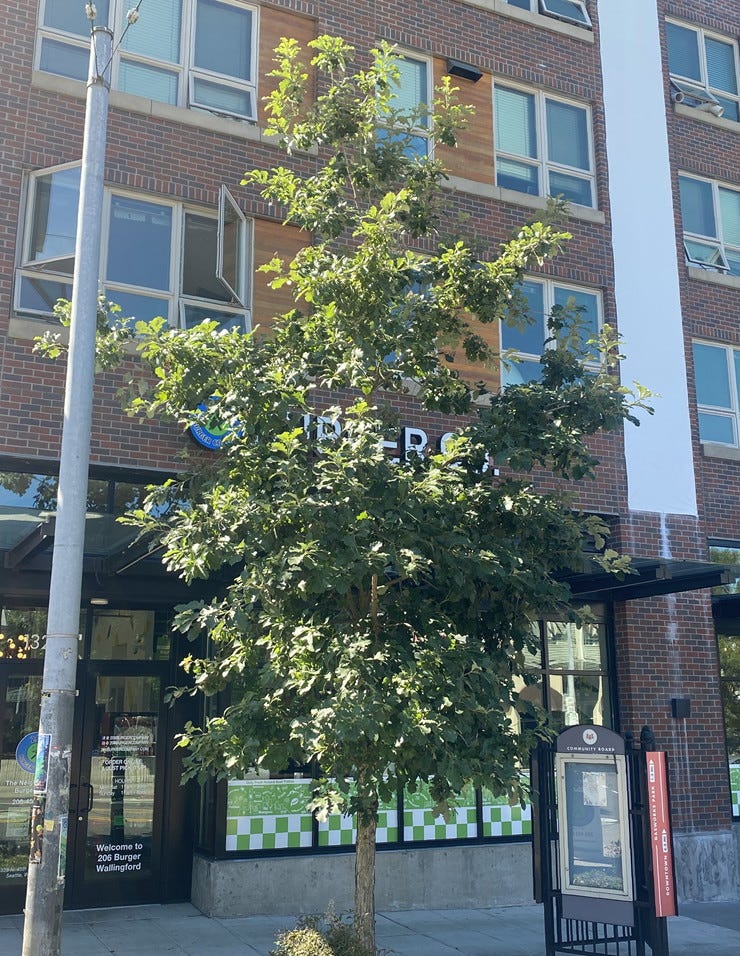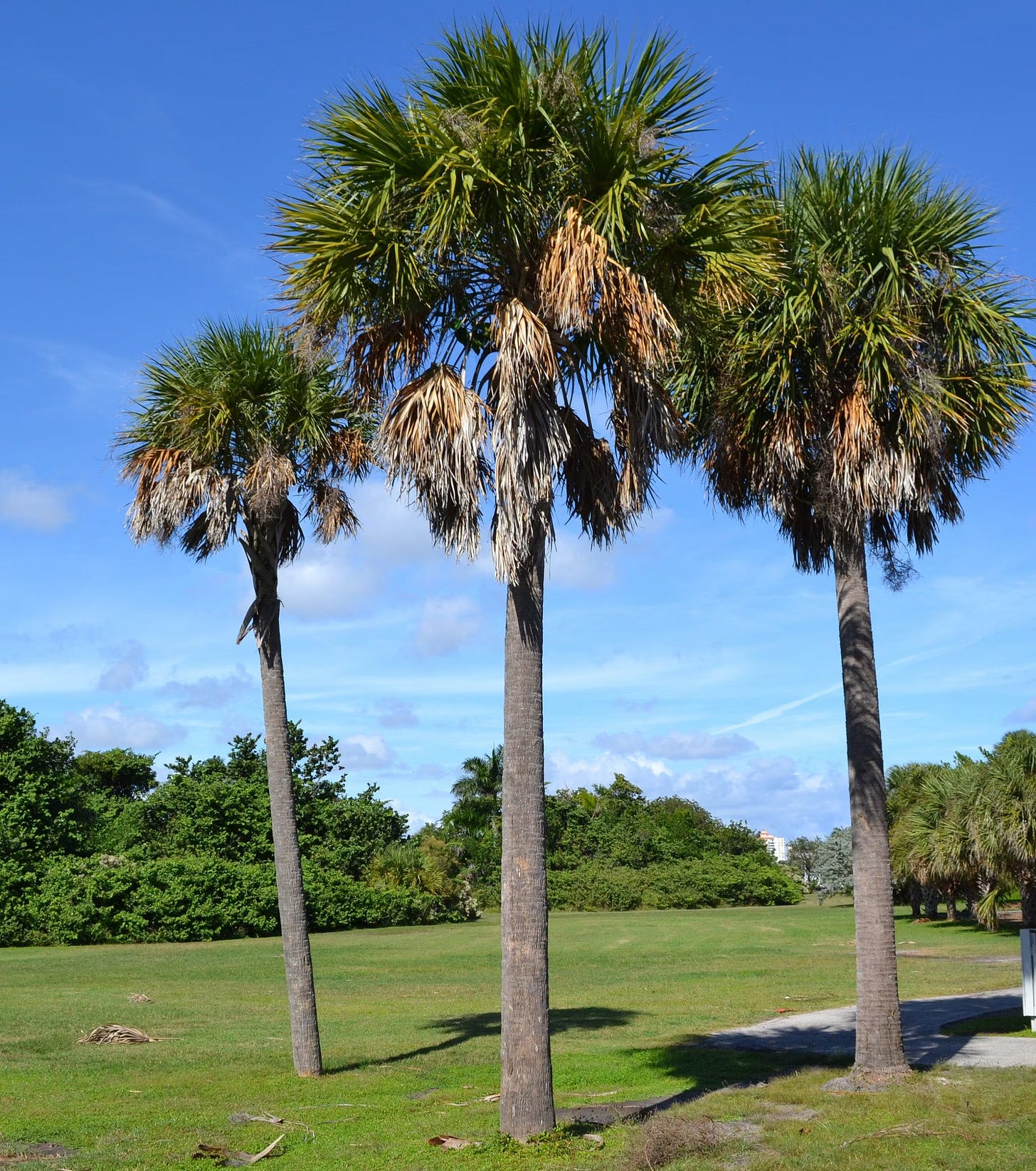Trees for Urban Spaces
As more cities look to preserve green space, the options for street trees continue to grow
With the reality of warming temperatures setting in more quickly for dense urban areas like cities and towns, city and town leaders are realizing the importance of green space to help moderate temperatures and to preserve good air quality. For example, Paris, France has begun planting dense strips of trees of varying species like willows, oaks, elms, and poplars around and throughout the city, creating pockets of small forest and wildlife habitat amidst concrete and asphalt. Of course, the space available for such plantings varies from city to city, and some may not be able to plant full size oaks or maples. But thankfully, the past ten years or so has seen an explosion in the development of narrow, upright tree cultivars that can provide shade cover but fit within a narrower footprint. For this post, I wanted to highlight some of these for the benefit of those who live in a city or town who want a tree or two but have limited space, and those who are lobbying their city or town for more green space.
One caveat before I dig in is that I don’t know if all of these varieties are available everywhere. But I’m going to endeavor to pick ones that have been around for a while, which increases their likelihood of being available from a nursery or garden center.
Acer griseum, (Paperbark Maple) ‘Fireburst’ - an more upright, columnar variety of a very tough and adaptable, hardy maple that offers beautiful cinnamon-colored peeling bark and orange-red fall color; 25-30’ tall by 15’ wide.
Acer rubrum (Red maple) ‘Armstrong Gold’ - a tightly columnar version of red maple, only about 12 feet wide at maturity; yellow to orange fall color. Tolerant of heat, cold hardy, adaptable to dry or wet conditions but prefers low pH (acidic) soils.
Carpinus betulus (European Hornbeam) - a number of excellent narrow, upright varieties make good candidates for street tree use including ‘Fastigiata’, ‘Columnaris Nana’, and ‘Emerald Avenue’; quite tolerant of drought and a range of soil conditions; prefers some shade but seems to hold up well in full sun. Not the most impressive fall color (yellow at best) but one of the more trouble-free trees from my observation.
There is a hornbeam native to the U.S., Carpinus caroliniana, but it is slower growing and can be a little more picky about soil (not as tolerant of dry conditions, especially in full sun) but it possesses an excellent size/shape for street tree use if sited well, and superior fall color to its European counterpart. Excellent cultivars include ‘Fire King’, ‘Firespire’, and ‘Rising Fire’.
Cryptomeria japonica (Japanese cedar) ‘Radicans’ or ‘Yoshino’ - listing this here because I have a real affinity for Cryptomeria; an excellent replacement for the disease-plagued Leyland cypress; gorgeous dense, upright/pyramidal habit even in old age, especially if given some extra space between plantings. Bark is also attractive when limbed up a few feet. Too wide for planting strips next to residential streets but excellent for parks and more open areas. Cold hardy and quite tolerant of heat, humidity, and drought.
Fagus sylvatica (Eurpean beech) ‘Dawyck’, ‘Dawyck Gold’, ‘Dawyck Purple’ - a tree mostly for areas north of zone 7 where European beech appreciates cooler, less humid air. The three cultivars listed are narrow/upright and feature foliage colors of green, golden yellow, and dark purple, respectively. There’s also a narrow, purple-leafed weeping variety called ‘Purple Fountain’.
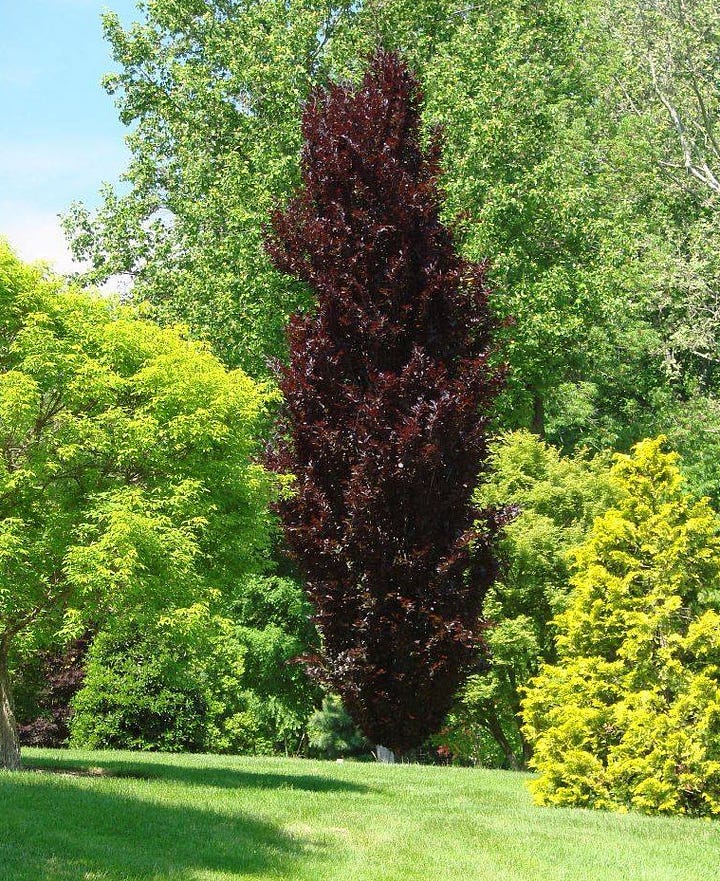
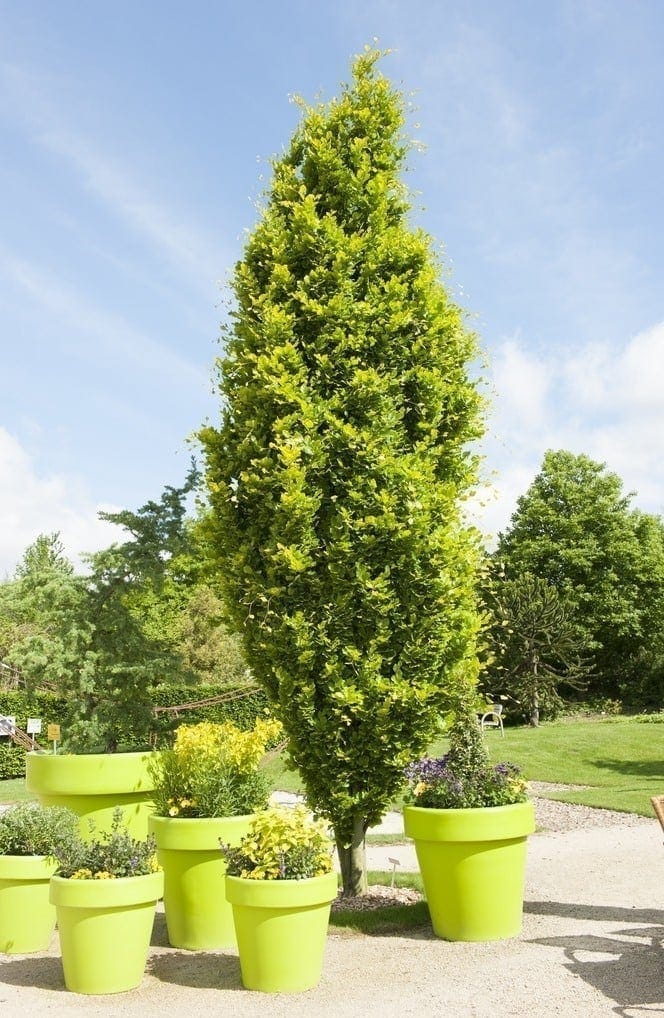
Ginko biloba (Maidenhair tree) ‘Golden Colonnade’, ‘Goldspire’ - these two cultivars of Ginko are perfectly suited as street trees, maintaining a very narrow habit with good foliage density from bottom to top; outstanding gold color in the fall; tolerant of a range of soil pH, quite drought tolerant but also adaptable to periodic wet conditions. Both cultivars are male, so no worries about stinky fruits.
Gleditsia triacanthos (Honeylocust) ‘Streetkeeper’ - increasing in popularity in urban locations as well as parking lots because of its durability and adaptability to varying soil conditions, hardiness, heat tolerance, and salt tolerance. Lack of low branching makes even non-narrow cultivars good for street tree use. But Streetkeeper is more columnar, maxing out at maybe 20’ wide at maturity, if that. The important thing is to make sure you choose a cultivar and not a seedling, because the seedlings will produce sharp thorns and messy seed pods. Fall color is bright yellow.
Juniperus virginiana (Eastern red cedar) - a very tough and adaptable evergreen; female plants are an excellent food source for birds, producing copious amounts of small blue berries. Looks best in full sun but can tolerate partial shade. Limbed up a little, the peeling bark is attractive. Nearly all cultivars are narrow enough for street tree use.
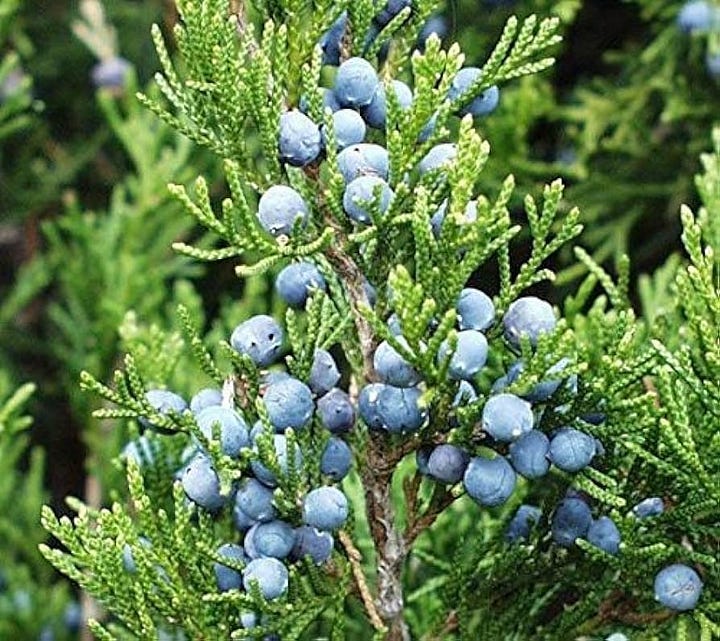

Magnolia virginiana (Sweetbay Magnolia) - a bit under-appreciated because of the larger flowers and dual-color foliage of it’s larger cousin, the Southern Magnolia. Sweetbay magnolia likes wetter soil, often growing near the edges of ponds and lakes, but can take periods of drought once established. Foliage is evergreen to semi-evergreen depending on cultivar, but almost all varieties are mostly upright to moderately columnar in habit. Creamy white 3” flowers from April to September. The cultivar ‘Moonglow’ has the most potential as a street tree, especially if limbed up.
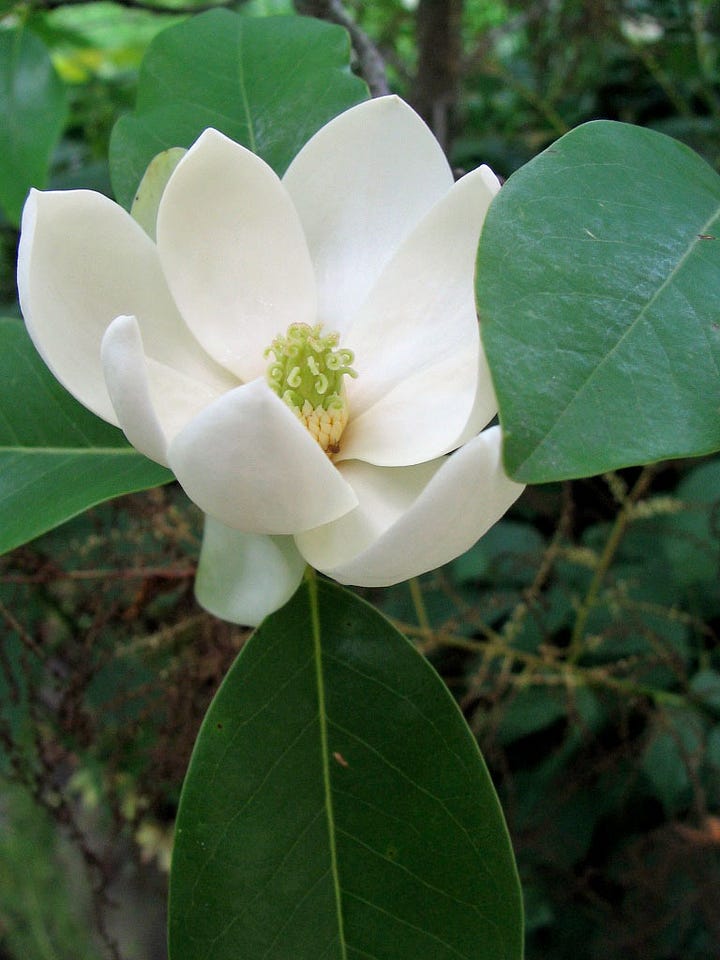
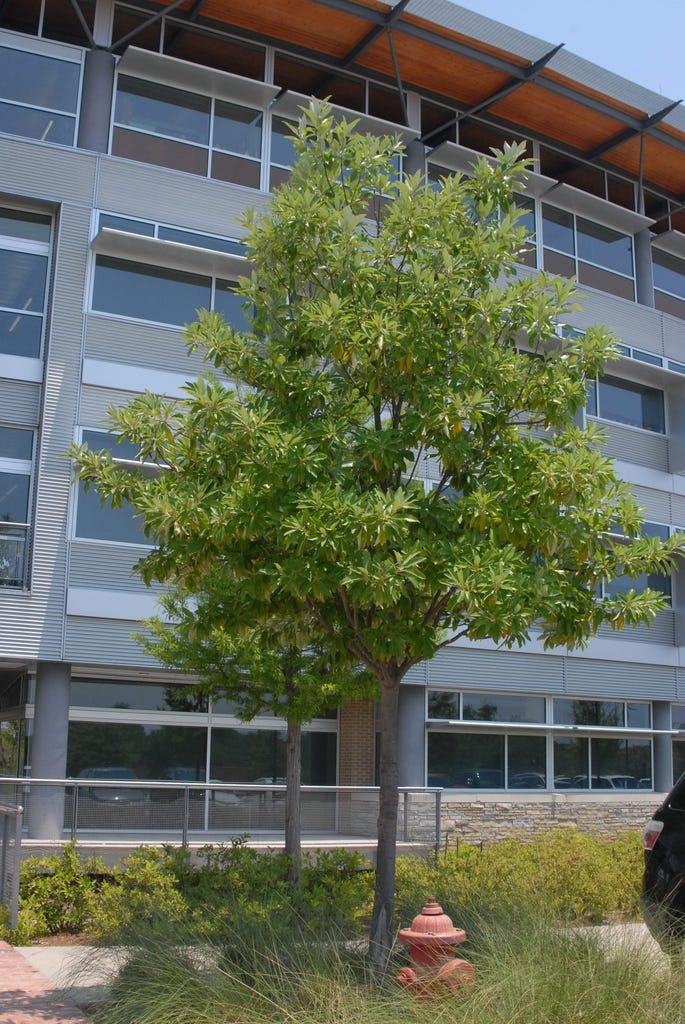
Nyssa sylvatica (Black tupelo, black gum) - one of the best moderate sized trees for fall color; lovely glossy leaves as well; numerous cultivars like Firestarter, Afterburner, and Forest Fire are more upright/pyramidal in habit. Nyssa loves wet soils but adapts well to drier sites as well. Hardy to Michigan and southern Maine but tolerates the heat of the deep south as well. Brilliant electric orange and red fall color.
Pistachia chinensis (Chinese pistache) - another durable small tree that can handle heat, dry compacted soil, salt, and tree pits with no difficulty. Just be sure to select the seedless male cultivars, which tend to be more narrow and upright than the straight species. Reliably outstanding fall color even in the Mid-Atlantic and upper south.
Prunus sargentii (Sargent cherry) ‘Columnaris’ - a very upright, narrow, vase-shaped variety of Japanese flowering cherry; the species has a reputation for being more durable and forgiving among the Asian flowering cherries, though still dislikes poorly drained soils and excessive heat/humidity. Best suited to zones 4 to 7, and no further south. Loaded with soft pink blooms in spring that envelope the branches.


Quercus bicolor (Swamp white oak) ‘Beacon’ - a very narrow variety that tolerates heat (including reflected heat from parking lots), heavy clay soils (as long as pH is acidic) and can take some shade from larger trees overhead.
Quercus macrocarpa (Bur oak, mossy-cup oak) ‘Urban Pinnacle’ - much more tolerant of high pH (alkaline) soils than other oaks, therefore more forgiving of being planted near roadways and concrete. Acorns of ‘Urban Pinnacle’ are smaller than the species. Upright pyramidal habit.
Other urban-friendly oak cultivars:
Quercus nuttallii (Nutall oak)
‘Big Boy’, ‘High Point’
Quercus palustris (Pin oak) (does not tolerate high pH (alkaline) soils)
‘Green Pillar’, ‘Promenade’, ‘Streetwise’
Q. robur (English oak)
‘Crimson Spire’, ‘Fastigiata’, ‘Kindred Spirit’, ‘Regal Prince’
Sabal palmetto (Cabbage palm) - increasingly popular along coastal areas of southeast North Carolina to Florida, westward to Texas. Zones 8-11 but with climate change, hardiness likely to expand northward over time.
Styrax japonica (Japanese snowbell) - a gorgeous small flowering tree, best in zones 7 and 8; beautiful fragrant, white bell shaped flowers hang down in clusters from the branches in spring. Choose columnar/narrow varieties like ‘Evening Light’ and ‘Snow Charm’. Late spring freeze damage is one caveat with this tree. Otherwise, fairly adaptable.
